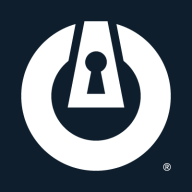

Check Point Application Control and ThreatLocker compete in the cybersecurity domain, specifically in application control and security policy enforcement. Based on feature richness and database extensiveness, Check Point has an edge, but ThreatLocker's focus on zero trust and ease of use positions it strongly for businesses prioritizing security and simplicity.
Features: Check Point Application Control offers an extensive database with granular control options, automatic updates, and the ability to manage application traffic effectively. The database is regularly updated to include a wide range of applications, ensuring continuous protection. ThreatLocker emphasizes application control through a zero-trust approach, allow listing, and ring-fencing, preventing unauthorized applications from running and ensuring tight policy adherence.
Room for Improvement: Check Point could improve by simplifying policy configuration, enhancing support response times, and reassessing its pricing structure to be more competitive. ThreatLocker needs to enhance its user interface and simplify the learning curve, offering more comprehensive training and support services for less experienced users.
Ease of Deployment and Customer Service: Check Point supports diverse deployment options—on-premises, hybrid, and cloud—but users report inconsistency in support response times. ThreatLocker offers easy and efficient deployment options with mixed reviews on support responsiveness, indicating variability in their support experience.
Pricing and ROI: Check Point's pricing is perceived as high, potentially deterring smaller businesses despite its security features delivering positive ROI. ThreatLocker is considered reasonably priced, with straightforward pricing models that offer good ROI due to its ability to enhance security and reduce risk.


ThreatLocker Zero Trust Endpoint Protection Platform offers robust endpoint security through application control and allowlisting, safeguarding servers and workstations from unauthorized software execution.
ThreatLocker Zero Trust Endpoint Protection Platform provides extensive application control with features like ring-fencing and selective elevation, ensuring meticulous execution management. Offering learning mode and extensive support, it integrates threat detection and activity monitoring to enhance compliance, reduce costs, and bolster cybersecurity through alerts and approvals. Despite its strengths, there are areas for improvement in training flexibility, policy updates, and interface enhancements, along with challenges in handling non-digitally signed software. Deployed across environments, it works well with existing cybersecurity instruments for real-time threat prevention.
What are the top features of ThreatLocker?ThreatLocker Zero Trust Endpoint Protection Platform is widely implemented to safeguard IT infrastructures against unauthorized access and application use. In sectors where data security is paramount, this platform enables users to prevent unauthorized software installations and control device applications, ensuring real-time threat prevention and compliance with industry regulations.
We monitor all Application Control reviews to prevent fraudulent reviews and keep review quality high. We do not post reviews by company employees or direct competitors. We validate each review for authenticity via cross-reference with LinkedIn, and personal follow-up with the reviewer when necessary.